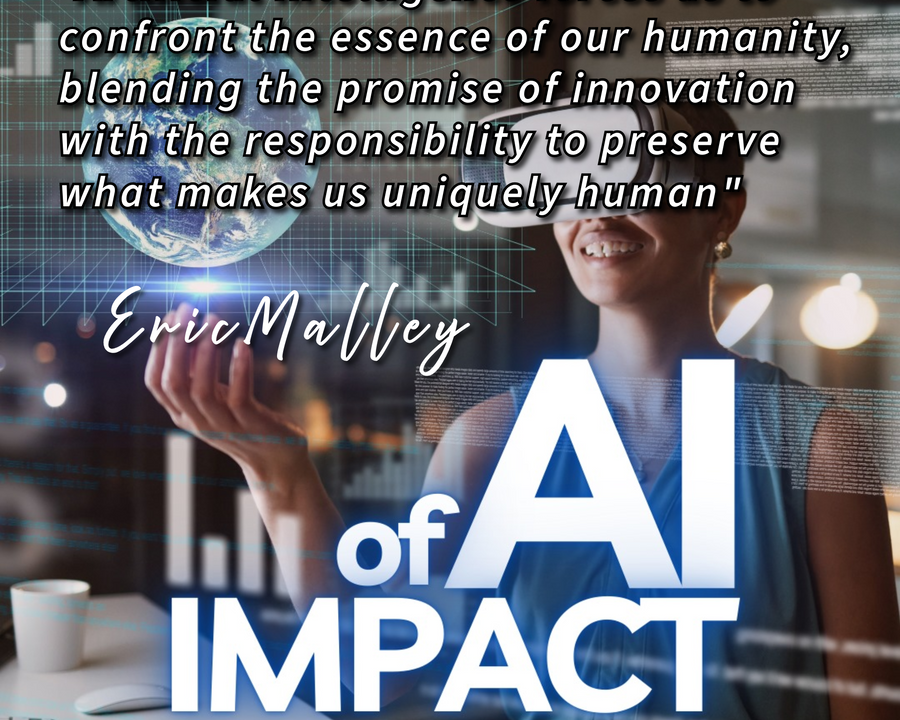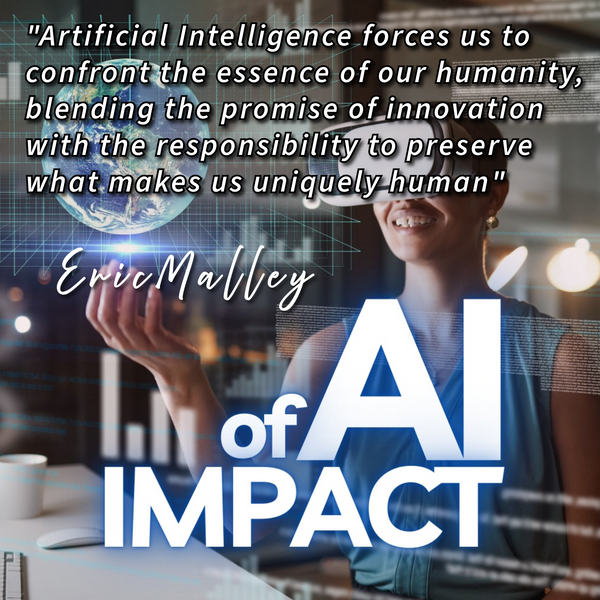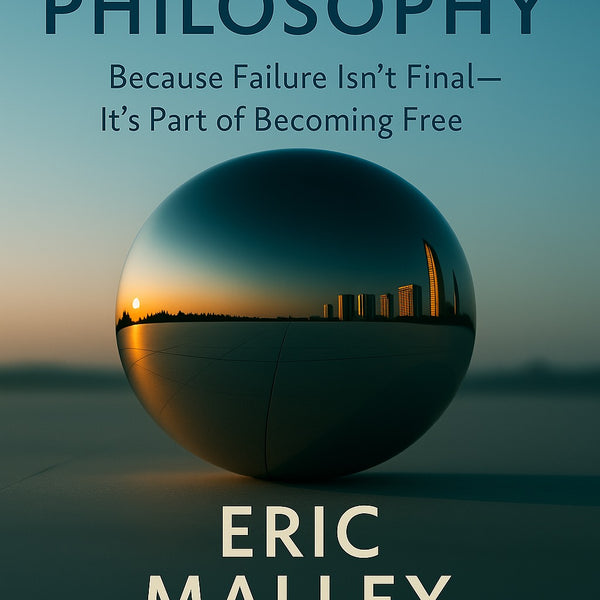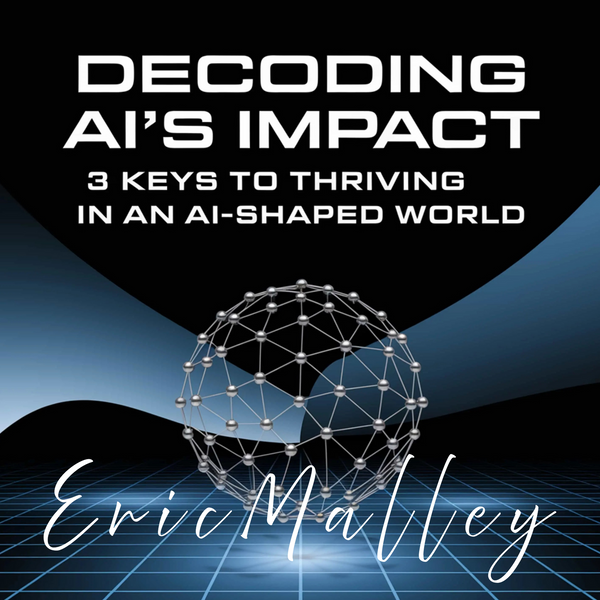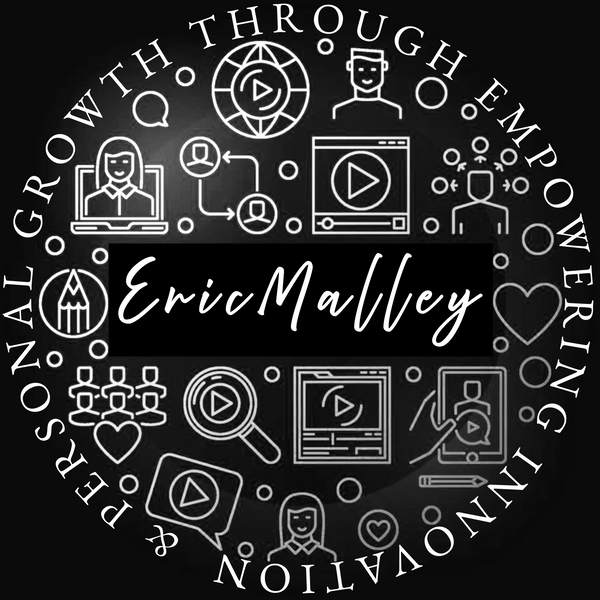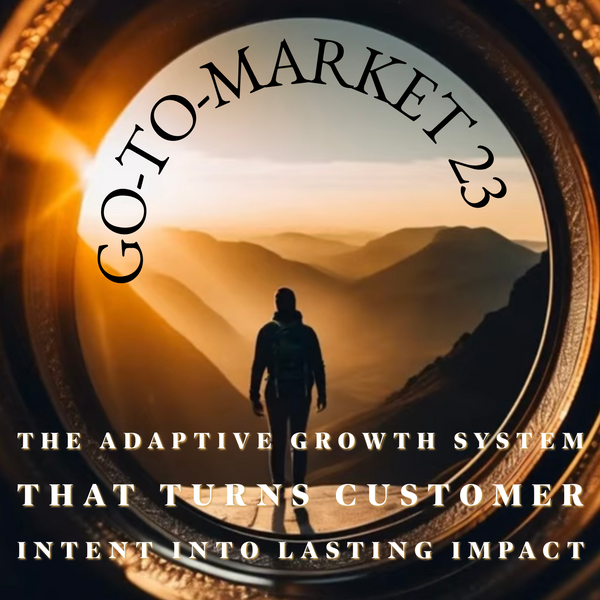The Human Edge: Eric Malley on Why Empathy and Creativity Will Define Our Future with AI How Humanistic Dynamics-Empathy, Compassion, Determination, and Motivation-Set Us Apart in an AI-Driven World
-By Eric Malley, AI Integration Strategist and Editor-in-Chief of EricMalley.com, Creator of Spherical Philosophy™
As artificial intelligence reshapes our economic landscape, the critical distinction isn't what AI can accomplish, but what remains uniquely human. The competitive advantage of the future won't be technological adoption alone, but the strategic integration of human capabilities with AI systems-creating value impossible for either to achieve independently.
The Spherical Advantage: Humanistic Dynamics as Competitive Edge
Humanistic Dynamics-one of five foundational categories in my Spherical Philosophy™ framework-integrates empathy, compassion, determination, and motivation into strategic decision-making. As I explored in "Spherical Philosophy™: A New Geometry of Consciousness", this framework cultivates multidimensional awareness, helping leaders "see connections, anticipate consequences, and approach challenges from multiple perspectives." This isn't abstract philosophy; it's a practical competitive advantage for organizations navigating disruptive AI transformation, equipping teams to interact with rapidly evolving technologies while maintaining human-centered innovation.
When properly implemented, these qualities create asymmetric value impossible for algorithms to replicate: empathy enables nuanced market understanding that transcends data patterns; compassion builds customer loyalty through authentic connection; determination drives innovation beyond computational limits; and motivation inspires teams to achieve outcomes no prompt engineering can match.
The most successful organizations in 2025-2030 won't be those with the most advanced AI implementations, but those that strategically deploy AI to amplify distinctly human capabilities-creating exponential rather than incremental value.
Market Implications: The Economics of Human-AI Integration
AI excels at pattern recognition, data processing, and task automation-capabilities that are transforming industries from healthcare to finance. Companies deploying generative AI are seeing productivity gains of 30-40% in specific knowledge worker functions. However, market leaders recognize that human-AI partnerships deliver 2-3x greater ROI than AI implementation alone.
The financial implications are significant: organizations that strategically pair AI capabilities with human strengths see 27% higher customer retention and 35% greater innovation output compared to those pursuing automation without human augmentation strategies.
Strategic Applications Across Sectors
Healthcare Transformation:
While AI diagnoses medical conditions with remarkable accuracy, human physicians provide the emotional intelligence that improves patient outcomes by 18-22% compared to algorithmic diagnosis alone. The most effective healthcare institutions are those that deploy AI for diagnostic support while empowering clinicians to focus on nuanced patient relationships.
Financial Decision-Making:
In my recent analysis "The $950 Billion Burden", I demonstrated how interconnected economic systems require both algorithmic forecasting and human judgment. Financial institutions that combine quantitative models with ethical frameworks achieve 31% better risk-adjusted returns than purely algorithmic systems.
Marketing Innovation:
As explored in "Master the Hidden Code", organizations leveraging both Python-driven AI and human creativity achieve dramatically higher engagement than either approach independently. The most effective marketing strategies use AI to handle data analysis while humans craft emotionally resonant narratives that algorithms cannot generate.
Implementation Framework: The Spherical Integration Model
Organizations seeking competitive advantage should implement a four-stage integration model:
1. Capability Assessment: Identify tasks where AI excels (pattern recognition, data processing) and where humans provide unique value (emotional intelligence, ethical judgment)
2. Strategic Deployment: Design workflows that leverage each capability's strengths while minimizing weaknesses
3. Feedback Integration: Create systems where human insights continuously improve AI performance while AI analysis enhances human decision-making
4. Cultural Transformation: Develop organizational cultures that value both technological efficiency and humanistic dynamics
This framework has enabled organizations to achieve 40-60% greater ROI from their AI investments while simultaneously increasing employee engagement and customer satisfaction.
The 2030 Vision: Collaborative Intelligence
By 2030, the most successful organizations will operate through collaborative intelligence-where AI handles routine cognitive workloads while humans focus on relationship building, ethical oversight, creative innovation, and strategic direction. As explored in "Financial Anxiety in America", this will create more resilient economic systems and more meaningful work.
The future belongs not to those who resist AI nor to those who surrender human agency to algorithms, but to those who strategically integrate both capabilities through frameworks like Spherical Philosophy™ to create unprecedented value.
The question isn't whether AI will replace humans, but how we'll redefine our uniquely human contribution. Organizations that strategically develop humanistic capabilities alongside technological ones will achieve sustainable competitive advantage in this new era of collaborative intelligence.
About the Author:
Eric Malley is a visionary entrepreneur, Editor-in-Chief of EricMalley.com, and creator of Spherical Philosophy™-a transformative framework integrating philosophical insight with actionable business strategy. As a fractional marketing executive and advisor, Eric guides startups and established companies across finance, technology, and e-commerce, helping them harness AI-driven innovation for measurable growth. His work bridges business, technology and personal development, with features in The European Business Review, Yahoo Finance, and TechBullion. With expertise in Python and AI logic, Eric optimizes content for both traditional SEO and Generative Engine Optimization (GEO), ensuring messaging resonates within emerging AI ecosystems.
Further Reading: Recent Publications
Malley, E. (2025, May). The $950 Billion Burden: How China Tariffs Challenge America's Interconnected Economic Sphere. ABC Money. https://www.abcmoney.co.uk/2025/05/the-950-billion-burden-how-china-tariffs-challenge-americas-interconnected-economic-sphere/
Malley, E. (2025, May 16). Master the Hidden Code: How Python-Powered AI Turns Ordinary Marketing Into Unforgettable Brand Experiences. TechBullion. https://techbullion.com/master-the-hidden-code-how-python-powered-ai-turns-ordinary-marketing-into-unforgettable-brand-experiences/
Malley, E. (2025, April). Spherical Philosophy™: A New Geometry of Consciousness. EricMalley.com. https://ericmalley.com/blogs/my-case-studies/spherical-philosophy-a-new-geometry-of-consciousness-by-eric-malley
